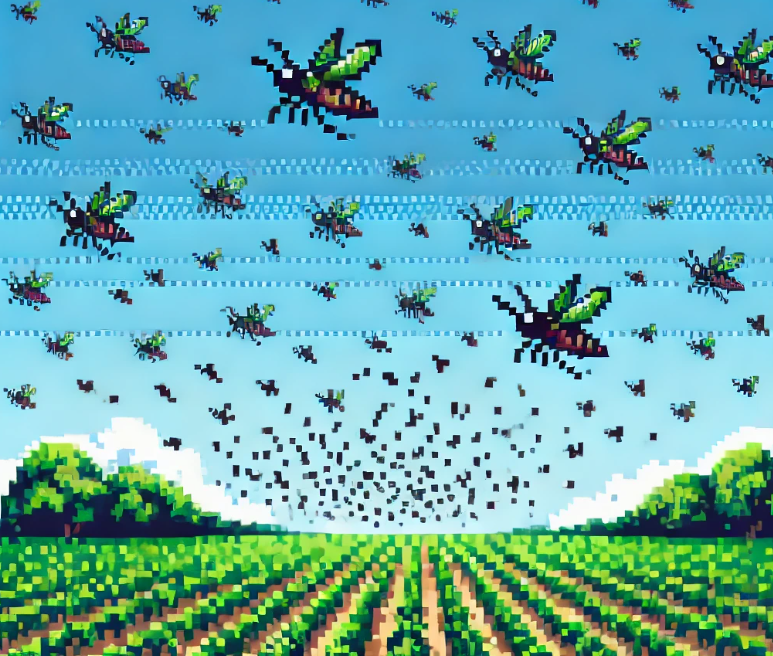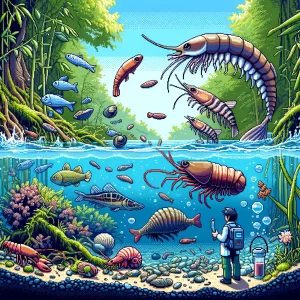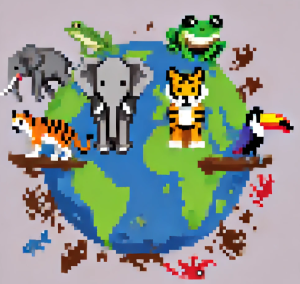
Predicting the Next Invasive Species
When you think of invasive species, you might picture vines choking out local plants or animals disrupting local ecosystems. But how do these invasive species make their way to new areas, and can we predict which species might be next?
Thanks to a new, advanced tool for assessing the risk of biological invasions, researchers are now closer to answering these questions. Let’s explore this fascinating development and understand its impact on our daily lives and our environment.
The Growing Problem of Invasive Species
Invasive species are non-native organisms that cause harm to the environment, economy, or human health when introduced to a new area. They often outcompete local species for resources, leading to significant ecological and economic damage. Globalization, through trade and transport, has accelerated the spread of these species, making biosecurity measures more crucial than ever.
Biosecurity involves actions taken to prevent the introduction and spread of harmful organisms. Despite efforts over the years, the issue of invasive species continues to grow. To address this, scientists have developed a new tool that uses “invasion syndromes” to predict which species are likely to become invasive.
Understanding Invasion Syndromes
“Invasion syndromes” refer to common characteristics shared by species that have successfully invaded new areas. These include traits related to their life history, such as reproductive habits, and macroecological patterns like geographic range and habitat preference. By analyzing these attributes, scientists can identify species that have the potential to become invasive.
The new tool, which uses a method called “Multiple Imputation with Chain Equation” (MICE), fills in gaps in data about species’ traits and patterns. It then uses this comprehensive dataset to model and predict which species are at risk of becoming invasive.
How the Tool Works
The tool analyzes data from 466 amphibian and reptile species with known invasion histories and applies the findings to over 16,000 species worldwide. This approach helps identify species that could be unintentionally transported and introduced to new areas, as well as those likely to establish alien populations if introduced.
For example, species that thrive in human-disturbed habitats and are common in their native ranges are more likely to be transported and introduced. On the other hand, species that are large, adaptable to various habitats, and have extensive geographic ranges are more likely to establish themselves as invasive in new areas.
Predicting Future Invaders
Using this tool, researchers forecasted that 160 amphibian and reptile species without known invasion histories could be unintentionally transported and introduced in the future. Among these, 57 species have a high risk of establishing alien populations. This prediction helps biosecurity agencies prioritize which species to monitor and prevent from entering new areas.
Real-World Implications
This tool represents a significant advancement in biosecurity and invasive species management. By predicting potential invaders before they cause damage, we can implement preventive measures more effectively. This proactive approach is not only more efficient but also more cost-effective compared to dealing with established invasive species.
For instance, consider the economic impact of invasive species on agriculture. Crops can be devastated by pests that were unintentionally introduced, leading to increased costs for farmers and higher prices for consumers. By identifying and preventing these species’ entry, we can protect our food supply and save money.
Connecting the Dots: Everyday Impact
Invasive species can also affect our daily lives in more direct ways. For example, the spread of certain amphibians and reptiles can increase the number of diseases that affect both humans and pets. By preventing these species from establishing populations, we reduce the risk of disease transmission.
Moreover, invasive species often disrupt local ecosystems, leading to a loss of biodiversity. This loss can impact recreational activities such as fishing, hiking, and birdwatching and diminish the natural beauty of our surroundings. Protecting native species and ecosystems ensures that future generations can enjoy these activities and environments.
What do you think?
This new tool for predicting invasive species is a very useful for biosecurity. It highlights the importance of understanding and preventing biological invasions to protect our environment, economy, and health. Here are a couple of questions to spark your thoughts and discussions:
- What steps can individuals take to help prevent the spread of invasive species in their local areas?
- How do you think advances in technology and data analysis will continue to improve our ability to manage and prevent biological invasions?
Feel free to share your thoughts and engage with others in the comments below!
Explore and Learn with Science:
Dive into groundbreaking research and inspiring stories with ‘This Week in Science’! Perfect for teachers and science enthusiasts, our free weekly newsletter expands your horizons in teaching and learning. Join us today and reshape your engagement with science.



